Two Jabins, both kings of Hazor, embody cycles of conflict and deliverance in biblical narratives, inviting a deeper dive into their historical and spiritual significance.
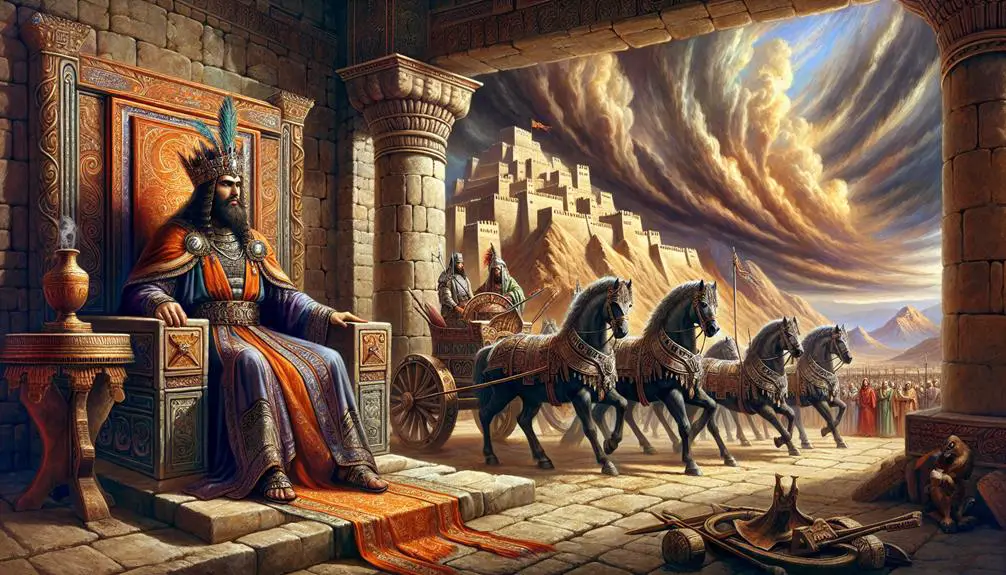
Jabin in the Bible
In the tapestry of biblical history, the threads of Jabin's story weave a pattern of repeated confrontation and divine intervention. You might find it curious that there were two kings named Jabin, both hailing from Hazor and both facing the Israelites under dramatically different circumstances.
The first mention of Jabin sets the stage for a powerful narrative of conquest and defeat at the Battle of Kishon River, while the reign of the second Jabin hints at a cycle of oppression and liberation that beckons deeper exploration. What lessons can you unearth from these mirrored reigns, and how do they reflect on the broader canvas of faith and resilience?
The answer lies just beyond the surface, inviting you to uncover the significance behind these dual monarchs.
Key Takeaways
- Jabin's title signifies a dynastic rather than personal name, associated with Hazor's leadership.
- The Battle of Kishon River underlines the strategic importance of geographical locations in ancient warfare.
- The reign of the second Jabin illustrates the evolution of Canaanite military and political strategies, including alliances and chariot warfare.
- The narratives involving Jabin in the Bible reflect themes of divine sovereignty and the complexity of interpreting divine justice in historical events.
The Historical Context
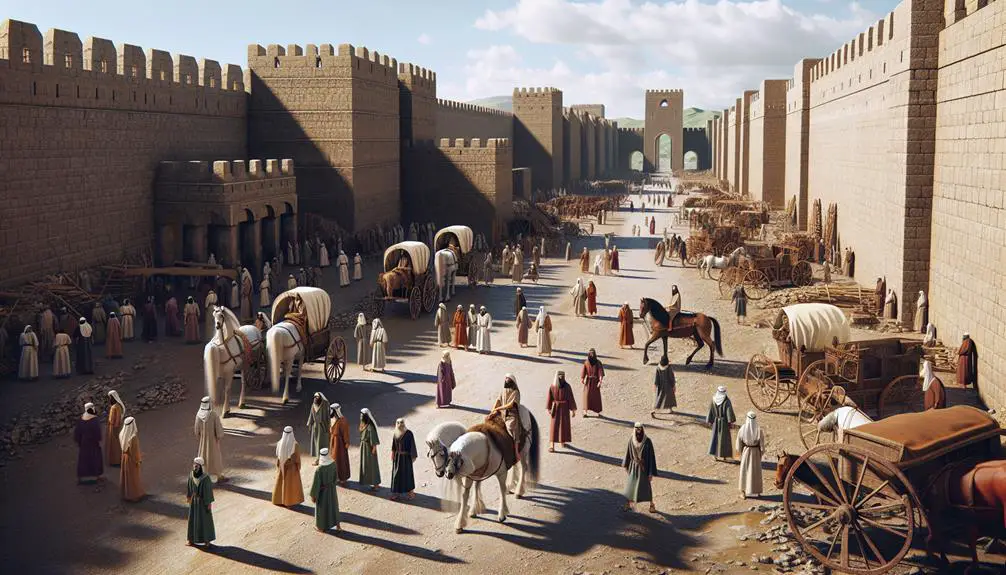
In exploring the historical context of Jabin in the Bible, it's crucial to understand that his reign as king reflects a period of significant conflict and power dynamics in ancient Canaan. This era, deeply intertwined with Canaanite culture, was marked by the rise and fall of city-states, each carving out its domain amidst tumultuous political landscapes. Archaeological findings have shed light on this intricate tapestry, revealing Canaan as a region of disparate communities bound by a shared culture yet frequently at odds over territory and influence.
You'll find that Canaanite culture, with its pantheon of gods and sophisticated urban centers, provides a backdrop against which the story of Jabin gains depth and nuance. These archaeological discoveries, including inscriptions and remnants of fortified cities, offer tangible links to the narratives recounted in biblical texts. They underscore the material wealth, architectural prowess, and the strategic significance of locations such as Hazor under Jabin's rule. This context not only enriches our understanding of Jabin's reign but also highlights the broader cultural and political milieu of Canaan, where power was contested, and history was written in the ruins and relics left behind.
Jabin of Hazor: First Mention

Reflecting on the complex tapestry of Canaanite culture and the archaeological insights into the era, it's essential to explore the first biblical mention of Jabin of Hazor, a figure emblematic of the period's contentious power dynamics. Jabin's lineage and Hazor's significance are central to understanding the historical and cultural context of his reign.
Hazor, as the capital, was a pivotal city-state in the ancient Near East, commanding major trade routes and influencing the surrounding regions. The name "Jabin" might not refer to an individual but a dynastic title passed down through generations, indicating the enduring authority of Hazor's kingship. This interpretation is supported by the archaeological evidence suggesting Hazor's prominence and wealth during the period.
Aspect |
Detail |
Significance |
|---|---|---|
Jabin's Title |
Dynastic, not personal |
Indicates a longstanding legacy |
Hazor's Role |
Capital of a city-state |
Central to regional power dynamics |
Archaeological Evidence |
Rich finds at Hazor |
Confirms historical accounts of wealth and influence |
Jabin's reign, thus, represents more than a mere historical footnote; it's a lens through which to view the broader socio-political landscape of Canaan during a time of intense inter-city rivalry and cultural flourishing.
The Battle of Kishon River
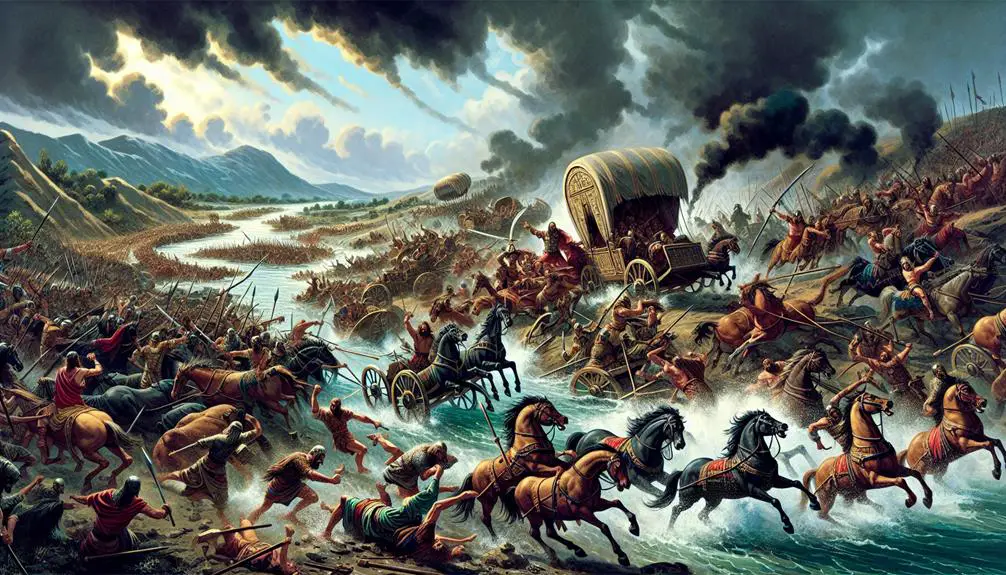
The Battle of Kishon River marks a pivotal moment in the struggle for Canaanite dominance, showcasing the dynamic interplay of military strategy and regional alliances. This confrontation highlights not only the military strategies employed but also the geographical significance of the site. The Kishon River, located in the Jezreel Valley, served as a strategic location that could offer significant advantages or pose considerable challenges, depending on the circumstances and the season.
Analyzing the military strategies, it's clear that control over the Kishon River area was crucial. The river's banks and surrounding terrain could either facilitate an ambush or hinder the movement of large forces. Thus, the tactical decisions made by the commanders had to account for these geographical features, making the battle not just a test of might but of wits and understanding of the landscape.
Furthermore, the alliances formed in the lead-up to this skirmish were indicative of the broader regional power dynamics. The ability to secure support or neutralize potential threats through diplomacy was as important as battlefield prowess. This battle, therefore, serves as a case study in how military strategies and geographical significance intertwined, influencing the outcome of conflicts in ancient times.
The Second Jabin's Reign
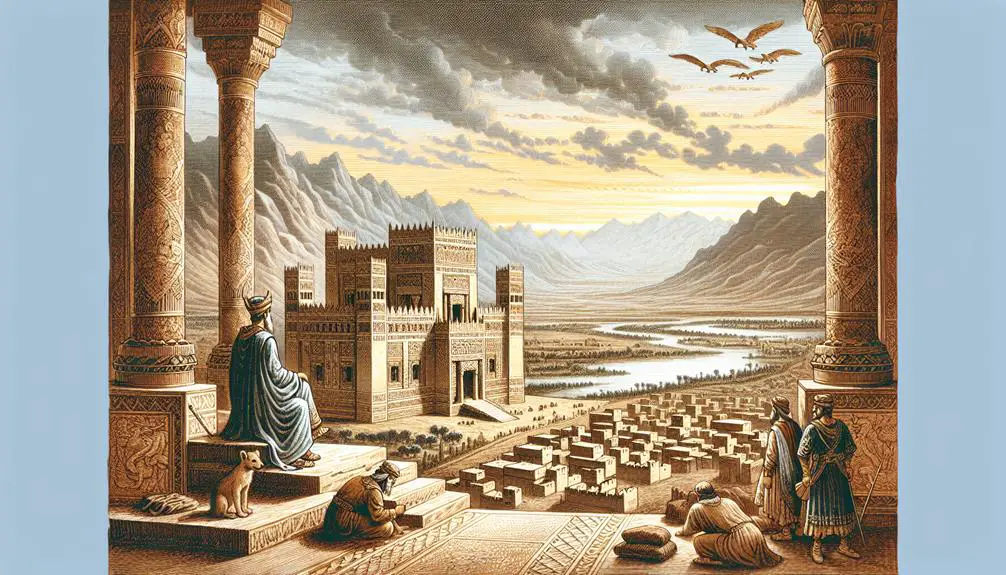
Building on the discussion of the Battle of Kishon River, it's crucial to examine the reign of the second Jabin, a period marked by significant shifts in Canaanite power dynamics and strategies. The second Jabin's rule over Hazor represents a strategic pivot in Canaanite history, illustrating how leaders adapted to changing geopolitical landscapes. This period underscores the evolution of military strategies and the formation of Canaanite alliances aimed at consolidating power and countering emerging threats.
- Formation of Canaanite Alliances: The second Jabin's reign is notable for the strategic alliances formed with neighboring city-states. These alliances were crucial in bolstering the Canaanite resistance against external aggressors, showcasing a diplomatic approach to warfare.
- Innovation in Military Strategies: Under his leadership, there was a significant evolution in military tactics. Emphasis was placed on chariot warfare, which played a pivotal role in the Canaanites' military engagements, demonstrating adaptability in combat strategies.
- Centralization of Power: The reign also witnessed efforts to centralize power in Hazor, transforming it into a formidable political and military hub. This centralization was instrumental in enhancing the king's ability to coordinate defense and exert influence over the region.
These developments under the second Jabin's reign highlight a period of strategic innovation and adaptation, reflecting the Canaanites' resilience in the face of adversity.
Theological Implications

Often, understanding the reign of the second Jabin extends beyond historical and military analyses to include significant theological implications that have shaped religious discourse. You encounter a narrative steeped in divine sovereignty, where God's ultimate control over the events of history is unmistakably highlighted. This concept becomes a cornerstone for discussions on providence and the divine right of leadership, suggesting that the outcomes of battles and the rise and fall of kings are under God's dominion.
Moreover, the story of Jabin introduces a layer of moral ambiguity that challenges simplistic interpretations of divine justice. You're faced with the reality that victory and defeat in these ancient texts aren't always straightforward reflections of moral righteousness or wickedness. This nuance invites you to grapple with the complexities of divine judgment and the morality of war, underscoring the importance of seeking deeper understanding beyond the surface of historical narratives.
In essence, the theological implications arising from the reign of the second Jabin enrich your appreciation of the Bible's depth. They serve as a reminder of the intricate interplay between divine sovereignty and human agency, compelling you to reflect on the profound mysteries of faith and the moral questions that have puzzled believers for millennia.
Frequently Asked Questions
How Do Archaeological Findings Support or Contradict the Biblical Accounts of Jabin and the City of Hazor?
You're diving into how archaeological findings align or clash with historical accounts of a monarch and his city, focusing on pottery styles and trade routes. Analysis reveals that pottery styles from that era match descriptions, supporting historical accuracy.
However, evidence on trade routes partially contradicts the accounts, suggesting a different extent or direction of commerce. This blend of support and contradiction enriches your understanding of ancient narratives through an analytical and scholarly lens.
Are There Any Extrabiblical Sources or Documents That Mention Jabin or Provide a Different Perspective on His Rule and Encounters With the Israelites?
You're diving into a sea of ancient texts, searching for whispers of a name. Unfortunately, extrabiblical sources mentioning Jabin are scarce.
However, diving into Canaanite mythology and diplomatic correspondences from the era might offer indirect insights. These documents don't name Jabin explicitly but paint a broader picture of the political and mythological landscape he'd have inhabited.
This approach requires piecing together fragments of history to glimpse his rule and encounters from a fresh perspective.
How Has the Character of Jabin Been Interpreted or Depicted in Jewish and Christian Traditions Outside of the Biblical Narrative?
In Jewish and Christian traditions, Jabin's morality is often explored through interpretive art and scholarly analysis. You'll find that interpretations vary, but many depict him as a complex antagonist, reflecting on themes of power and oppression.
This analysis goes beyond the biblical narrative, offering a multidimensional view of his character. Scholars and artists delve into these interpretations, providing a richer understanding of his role and impact on ancient and religious history.
What Role Do Linguistic Analyses Play in Understanding the Name "Jabin" and Its Possible Meanings or Origins in Ancient Semitic Languages?
Linguistic analyses are crucial in unpacking the Semitic etymology of names, offering insights into their significance. By examining 'Jabin,' you delve into ancient languages, uncovering layers of meaning that might reflect cultural or historical contexts.
This process isn't just about translating; it's about understanding how names like 'Jabin' resonate within their original settings, revealing aspects of identity and societal values. It's a scholarly exploration, where etymology meets historical interpretation.
How Do Modern Historians and Biblical Scholars Reconcile the Timeline and Historical Accuracy of the Events Involving Jabin With the Larger History of the Ancient Near East?
When you're delving into historical timelines and trying to fit specific events into the broader tapestry of ancient Near Eastern history, you'll often encounter chronological discrepancies.
Modern historians and biblical scholars meticulously analyze these inconsistencies to reconcile them within the historical context. They cross-reference archaeological findings, ancient texts, and linguistic analyses, aiming to piece together a coherent narrative that aligns with known historical events and timelines.
Conclusion
In conclusion, the narrative of Jabin in the Bible highlights the cyclical nature of leadership and oppression in ancient Israel's history. Just as a student might struggle with the same subject repeatedly until mastering it, Israel faced successive rulers named Jabin, each symbolizing a recurring challenge.
This repetition underscores the importance of learning from history to break cycles of adversity. Analyzing these biblical accounts offers valuable insights into the dynamics of power, resilience, and the human propensity to repeat history.


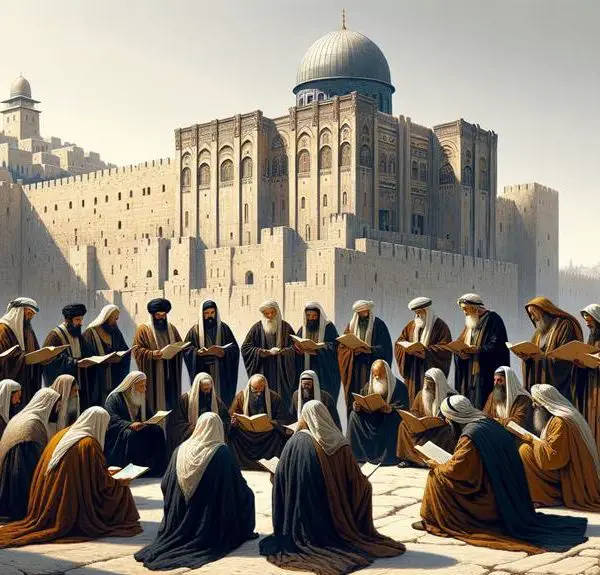
Sign up